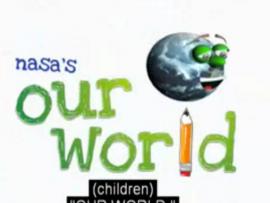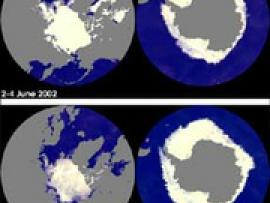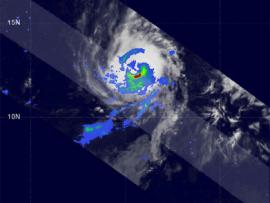Browse ESS2.D Resources
Browse ESS2.D Resources
Primary Topic:
Subtopics:
Type:
Keywords:
Summary:
The S'COOL Project involves students (ages 5 - 20+) in real science, making and reporting ground truth observations of clouds to assist in the validation of NASA's CERES satellite instruments. Includes lesson plans and other related materials.
Primary Topic:
Subtopics:
Type:
Keywords:
Summary:
Learn about precipitation and how clouds are formed. Find out why scientists study clouds and how you can help NASA collect cloud observation data as part of the Students' Cloud Observation OnLine, or S'COOL, Project.
Primary Topic:
Subtopics:
Type:
Standards:
Keywords:
Summary:
Whether referred to as "global warming" or "climate change," the consequences of the widescale changes currently being observed in Earth's climate system could be considerable.
Primary Topic:
Subtopics:
Type:
Keywords:
Summary:
This video covers the impact that climate change is having on Earth's oceans, and shows how technology is being used by NASA to help us learn how oceans are responding to climate change.
Primary Topic:
Subtopics:
Type:
Keywords:
Summary:
This NASA video segment explains the formation of hurricanes. Go behind the scenes with a meteorologist at the Weather Channel in Atlanta, Georgia to learn how scientists predict hurricanes and hurricane formation.
Primary Topic:
Subtopics:
Type:
Keywords:
Summary:
This NASA video segment focuses on the relationship between weather and climate. Learn how heat, air pressure, winds and moisture work together to produce local weather.
Primary Topic:
Subtopics:
Type:
Keywords:
Summary:
Students then collect and analyze data about the size and shapes of raindrops. Students have the opportunity to compare a 2-D representation to a 3-D representation to understand why scientists use multiple sources of data to study Earth Systems.
Primary Topic:
Subtopics:
Type:
Keywords:
Summary:
This website explores NASA's role in characterizing, understanding and predicting climate variability and change.
Primary Topic:
Subtopics:
Type:
Keywords:
Summary:
This website offer teachers and their students some background on how NASA is supporting the study of Earth's weather systems. There is a good image of TRMM data being used to understand tropical storms, and links to other websites with additional info.
Primary Topic:
Subtopics:
Type:
Keywords:
Summary:
Learn how clouds are formed and watch an experiment to make a cloud using liquid nitrogen.










